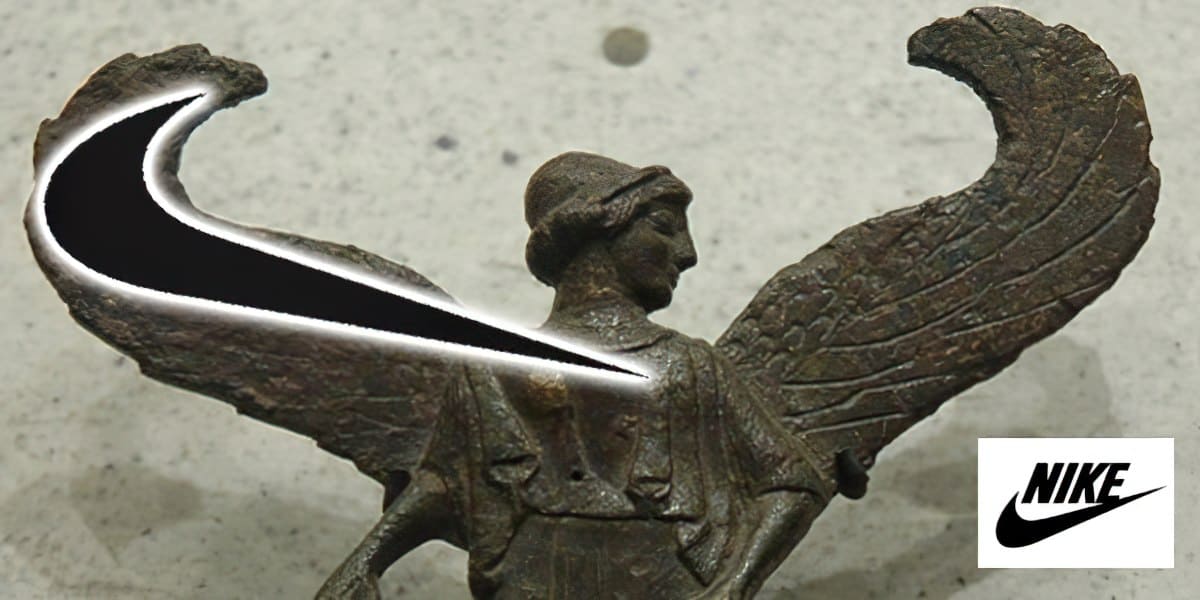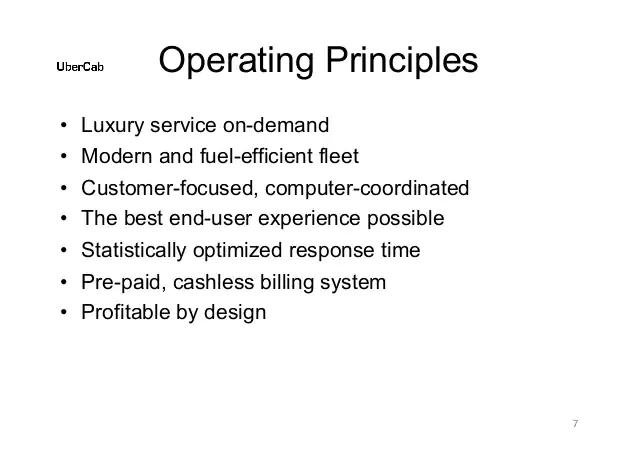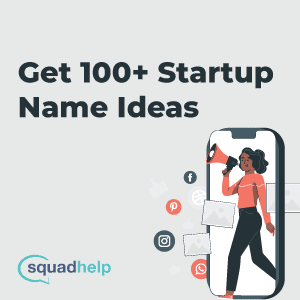The Startup Naming Guide
An entrepreneur’s guide to brand names
How To Come Up With A Startup Name
So you have an idea for a startup, and now you’re stuck trying to think of a name. What do you do?
- You could try asking your friends or other startup founders for startup naming ideas
- Search Google for startup name generators/tools/lists
- Ask your customers to help come up with startup names. If you already have some customers, this would be a great way of building startup name validation
- Buy startup naming ideas on Fiverr.com (just type “startup names” into the search box)
Or if you’re serious about your startup, and you want to do it right instead of rushing, don’t do any of those things. Follow the process, understand the psychology behind naming and find a name that suits your offering and customer expectations at the same time.
Don’t worry, I’ve got you covered.
I have come up with a startup naming process that will help you find startup names without wasting too much of your time.
Here’s how it goes.
In contrast to the general belief, we suggest starting thinking about the name of your startup from the very early stages.
The startup name should reflect the nature of your business and also reflect the vision of your business. The vision may change over time, but the startup name should be consistent.
Therefore, choose a startup name during the brainstorming phase of your business, rather than as a last-minute thought.
Check for trademarks, .com availability and social media profile availability. You can check for trademarks on https://tmsearch.uspto.gov/ and .com availability on http://whois.icann.org/.
You can also check if the startup has a Facebook page or a Twitter account on https://www.facebook.com/ and https://twitter.com/ respectively.
The startup name is the spine of your company. It’s the first customer touchpoint. It is also the most important aspect of branding since it determines how people perceive your company. As a result, startups should make sure their startup name is carefully chosen to fit the nature of their business.
Note:
This guide is huge. Fill this form to receive this article as a PDF .
Understand The Psychology Behind A Business Name
Brand names do more than help people identify your business. They convey clues about what the company does and what it stands for.
Just listening to a brand name triggers an emotional response, associations, and expectations in your customer’s mind, rather than a logical response.
Take Uber, for example.

What comes to your mind when you read the name? Besides cabs, it also triggers a sense of luxury – and that’s what the brand wanted to stand for from the beginning.
The brand name isn’t any other word. While we process language in the brain’s left side (the logical side), brand name processing is done on the right side (the emotional side). For example, just reading the word Starbucks may make you think of coffee, aroma, and even the satisfaction of sipping that coffee.
While this emotion is created over time through brand experience, even the first impression of a startup name can trigger a customer’s expectations and frame of mind.
Fun Fact
The name Starbucks is inspired by the book Moby Dick. The original plan was to call the chain Cargo House or Pequod after Captain Ahab’s ship in Moby Dick. But the brand consultant thought Starbos, the mining town, to be more appealing. More in-depth research and the first mate on the Pequod: Starbuck, seemed perfect. Hence the name – Starbucks. They added ‘s’ at the end of the name to make it sound more conversational.
According to co-founder Gordon Bowker’s research, they were intentionally looking for names starting with ‘St’ as they sounded powerful.
What really proved right for them is –
- Starbucks was an abstract name that had nothing to do with coffee. It eventually took the personality the brand created without any resistance.
- The name has two powerful words – Star and Bucks, which suggests luxury and good quality as first impressions.
Now that we think Cargo House or Pequod wouldn’t be that good of a choice.
So how do you come up with startup names that convey the right message without going too far or not enough?

Know The Five Types Of Business Names
The startup name you choose for your startup business can have a major impact on the long-term success of your company.
As a startup founder, you should know that you need to come up with business names that are easily remembered, connotate positive values and emotions, and convey the right message.
Different types of startup businesses require different startup names. Usually, you can choose your business name to be descriptive, evocative, invented, derivative, or acronym.
Descriptive Names
Descriptive startup names reveal what your business does or the value it offers. They are usually a straight fit with the product and customers don’t have to try very hard to understand them.
For example – Payslip is a company that provides automation and integration technology for global payroll management. The name clearly communicates the company’s core competency.
Other such examples of descriptive startup names are –
- Hotels.com
- The Weather Channel
- Bank of America
- Shredded Wheat
Descriptive names clearly position the brand in the customers’ minds by communicating what the company does or stands for.
But This naming style has its downside. If you choose a descriptive name, it becomes difficult for you to expand and diversify your brand. For example, if you choose a name, say – Men Cream, it’ll be difficult for you to get into female creams.
Moreover, it’s hard to get a trademark for some descriptive names as they are generic (like – Bank, company, cream) and do not have any distinctive character.
Also, even though a descriptive startup name can be catchy and easy to remember, they may not give an emotional charge to the customers.

Evocative Names
Evocative names don’t communicate exactly what the business does or what the offering is. Instead, evocative names create an image that’s easy to remember and evoke emotions about the business.
Also called suggestive names, evocative names leave room for interpretation of what the business does. It gives emotional meaning to the brand.
For example – Nike’s name was inspired by the Greek goddess of victory. The founder Phil Knight said it represented ‘the spirit of victory.’

Source: Greek Reporter
Another popular example is the name Buffer. The startup provides social media tools. Buffer’s founders decided to name it after an attribute (focusing on automation or scheduling), which made its product easy to remember and its name open to diversification.

Source: Youtube
Other such examples of evocative startup names are –
- Amazon
- Uber
- Patagonia
One thing to note is that evocative names are based on actual words. They don’t modify the words to sound more creative. This helps them get their meaning across very easily.
They are easy to trademark but don’t relate much to your industry of work. That is, it’ll take more time for you to let the user acquainted with what you do or what you offer.
That being said, evocative brand names provide a strong brand identity and increase brand recall.
Invented Names
Also called empty vessels or coined names, invented names are not real words. They are names that have been constructed by combining words from a source language or several languages.
Google is perhaps the best example of an invented name. Its founders Larry Page and Sergey Brin invented the name from Googol, a term denoting the decimal notation of digit 1 followed by one hundred zeroes.
Other examples of invented names are:
- Trello
- Pixar
- Zomato
- Verizon

Usually, entrepreneurs or brand strategists come up with invented names inspired by Latin, Greek, or other foreign root words.
Often brands also choose a strategy of misspelling words to create an invented name. For example – Tumblr, Reddit, and Flickr are based on alphabetical spelling variations of their original names.
The reason why entrepreneurs choose invented names is that they are unique and flexible in nature. These names best suit the companies who want to create a strong brand identity and convey something new or different.
The best part about invented names is that these names don’t come with any pre-attached emotion or personality and rapidly adopts the intended meaning over time. Also, it’s far easier to trademark them (and get an available domain name) as these names are not real words.
On the downside, you’ll have to work harder to make them memorable and attach emotion to your brand name.
Wordplay
Wordplay or derivative names are a combination of two or more words to create a new name. They can be either descriptive or evocative and usually convey what the business does or offers indirectly.
In simple terms, these names use two or more words to identify themselves and convey what they do or what they stand for.
For example –
- Evernote (Ever and note)
- LinkedIn (Linked + In)
- TripAdvisor (Trip + Advisor)
- CulinaryIQ (Culinary + IQ)
- Dunkin’ Donuts
Sometimes, companies even shorten the derived name to invent a new name. For example, Skype was originally called Sky-Peer-to-peer.
The main benefits of wordplay are these names are easy to remember and pronounce, and generally work well even in different languages. They even provide a strong brand image and identity.
Take, for example, The Honest Company- it’s a derivative name that evokes trust and honesty without being too direct about its product.
These names, however, are usually longer than other name alternatives.

Acronyms
Acronyms are the most common way to come up with a name. It is the combination of letters taken from each word in a phrase or sentence.
- AOL (America Online)
- BMW (Bayerische Motoren Werke Aktiengesellschaft)
- IBM (International Business Machines)
Acronyms are usually short, easy to pronounce, and easily memorised. Hence, they are widely used both in business and marketing. However, they lack any brand identity or meaning, which may be the reason why some entrepreneurs prefer to use them just for internal use.
Use an acronym when your company name is actually long and you’d want a shorter name.
But remember that it is not easy to trademark an acronym. In most cases, the acronym might already be registered or might already be used by some other company. And it’s not easy to build a strong brand identity around an acronym, so choose them carefully.

Choose A Name That Has These Qualities
What separates a good name from a not so good name is its ability to stick and appeal to customers. To get there, you must choose names that have these features (the SMILE formula):
- Suggestive: Suggestive of something about your brand or offering (can be quality as well).
- Memorable: Easy to spell, pronounce, and remember.
- Imagery: A name that aids in visualising the brand or its offering.
- Legs: Adapts to the theme and aids expansion.
- Emotional: The customers can associate some emotions with it.
Elaborate this SMILE framework and you’ll get the following features a good startup name should have:
Pick A Name That Denotes Something
Your name should denote something about your brand. It could be an aspect of your offering, your intended positioning, the USP, or quality associated with your brand – anything that tells the audience something about what they are going to buy or utilise or what value they should get.
For example-
- Lyft gives a hint to car-hailing
- The name Facebook can be related to socialising
- SpaceX denotes something related to space
- Canva is short for canvas
- Instacart denotes on-demand grocery (instant cart)
- Shein is a Jewish name denoting beautiful
It can be an abstract concept, or it could be related to the product you are making. Remember that a name should suggest what your company or offering is.
Choose A Name That Can Be Remembered
Avoid names that are hard to pronounce or spell as customers are likely to forget them. They should be easy to remember, which is why choosing a name that’s easy to pronounce and spell is important.
Follow this checklist –
- Keep syllables between two to four.
- Avoid names that are heavily misspelt. For example, choosing Otprfrm instead of Outperform is a bad idea.
- Don’t make your business name sound like a sentence. Keep it below 20 characters. The shorter, the better.
- Don’t sound similar to an existing large brand. This will make it hard for you to stand out.
Choose A Name That’s Easy To Visualise
Make your name easy to visualise. This will make it easier for customers to imagine the product and aid its sale.
Instacart (instant cart), a grocery on-demand delivery startup, is a good example of visual name. It’s easy to visualise an instant cart, which is something that makes it easier for customers to remember it.
But sometimes, with an invented name or a coined word, it’s hard to visualise anything. In that case, just make sure that:
- Your name results in certain visuals that can be associated with your company or offering. It can be the product or service offered, your brand positioning, or something related to your brand personality.
- Your name doesn’t lead to any non-associative imagery.
For example, even though the word Googol wasn’t known by many when the company was launched, it didn’t lead to any non-associative imagery, which, in turn, helped the brand associate this name to its own. Now you can’t think of anything else when you listen to or read the word Google.
Your Name Should Support Your Growth
Before you start naming your startup, have a prospective direction your business idea can head to in the future. Then choose a name that can be diversified to such sub-industries or new industries.
We suggest not to be too industry or offering specific if you plan to diversify. For example, if you start a startup called bookmyhotel but later want to get into real estate, the name may pose difficulty in diversification.
On the other hand, picking something too industry generic is also not good. For example, if you are selling wearables for kids, it’s better to have a brand name that your target audience can relate to.
Your Name Should Have An Emotional Value
Your name should evoke emotions that can be associated with your brand. This will make it easier for customers to emotionally connect with the product and form a relationship with it, which is vital for future sales.
A good example of this is Pinterest. Pinterest evokes the feeling of curiosity, which is a distinct value that its brand posits to deliver. This helps them stand out from other image sharing websites and makes it easier for customers to relate to the product.
Brands such as TikTok and Pinterest have succeeded in creating an emotional connection based on their names, resulting in better brand loyalty and sales too.
Avoid These Deal Breakers For Your Brand Name
Follow the SCRATCH approach while negating an option for your startup name.
- Spelling-challenged: Drop the option if it looks like a typing mistake or if the misspelt word changes the meaning or emotion.
- Copycat: Try not to copy a competitor’s naming strategy.
- Restrictive: Don’t go for a name that limits your brand’s future growth.
- Annoying: Does your name has a hidden meaning, or is it forced or pushy? If yes, then drop the option.
- Tame: Naming your hotel as “Hotel Hotel” would be too simple and boring.
- Curse of Knowledge: A name doesn’t have to be an insider joke. It should be something all of your target audience can relate to.
- Hard-to-pronounce: If it’s hard to pronounce or spell, it’s probably a bad idea.
The 8 Step Process To Come Up With A Startup Name
Naming shouldn’t be a random process. It should be intuitive, creative and logical. To make things easier for you, follow this step-by-step process to choose the perfect brand name:
Analyse Your Customer Persona
The first step you need to take is to get into the shoes of your target audience. Analyse what their life is. What excites them? What makes them look away? What do they pay for without thinking twice? What do they look for in a brand selling a similar offering like yours?
You’d need to go out and survey yourself. It may include a questionnaire or you may just analyse their behaviour otherwise. (Just don’t creep them out.)
Once you’re done, develop your ideal buyer persona. You’d then need to think from their perspective.
Make Everyone Fill An Open-Ended Survey
Consider it to be a game where you say a word or words for every word the other person says, like –
- Makeup: Lipstick
- Trip: Mountains
- Beach: Bikini
- Summer: Coconut water
- Love: Life
These are called trigger words and constitute a vital part of your naming process.
Develop a survey that starts with generic words and then move to words related to your industry or offering that you wish to sell. Make sure you make an extensive list and get it filled by as many people as possible. Asking your target audience to fill this up is recommended.
Once you’ve enough responses, develop a list of all the related words you got.
Brainstorm Names
This is where you come up with names combining your studies related to persona and trigger words. Come up with names belonging to all five types of brand names:
- Descriptive names
- Evocative names
- Invented names
- Wordplay
- Acronyms
Come up with at least five names in each of these categories. This way, you’ll have twenty-five names in the first go.
Come Up With More Names
Don’t stop after the first twenty-five names. Take the help of name generators to get more names. Here are some platforms that can help you with the same:
- Wordoid: It makes real-sounding made-up names to your business name that stand out.
- Squadhelp: It’s a crowdsourced naming platform where you can crowdsource names from experts around the world.
- Namelix: It is an AI-powered brand name generator that creates hundreds of real-sounding brand names related to the keywords you provide.
- Bustaname: Another name generator that lets you create hundreds of names by adding prefixes and suffixes to your keywords.
Shortlist Some Names
Once you are done with developing a list, the next time is to discard names that don’t fit the requirements.
Start discarding with SMILE and SCRATCH approach. Once done, move on to these four questions –
- How nice does the name look?
- How nice does the name sound?
- What comes to people’s minds when they think of the name?
Get votes from stakeholders and some people belonging to the target audience and negate names that get low scores.
This way, you’ll get one or more names that you can use for your startup. But it’s not the end.
Validate The Choice
Validating your name is important. Check if it’s available for registration and if it’s brandable enough. Use this checklist –
- Check for related trademarks.
- See if a .com domain is available. If not, check if the current .com website could pose a difficulty in building a brand?
- Check and register your brand name usernames on all social media channels. If not available, try to be uniform across channels.
If the name fulfils all the requirements, go for it. If not, think of a strategy to make it work.
Register Your Choice
If everything goes the right way, the next step would be to register your startup’s name. You have a wide range of options to do so – Buy a .com domain from registrars like Namecheap (we buy all our domain names from here) and build your website.
Get your trademark registered to ensure that you own it.
Once you’ve completed this, you are good to go. It’s time to get ready to sell your product or service.
It’s a startup!
The Startup Naming Guide
Explore the contents



